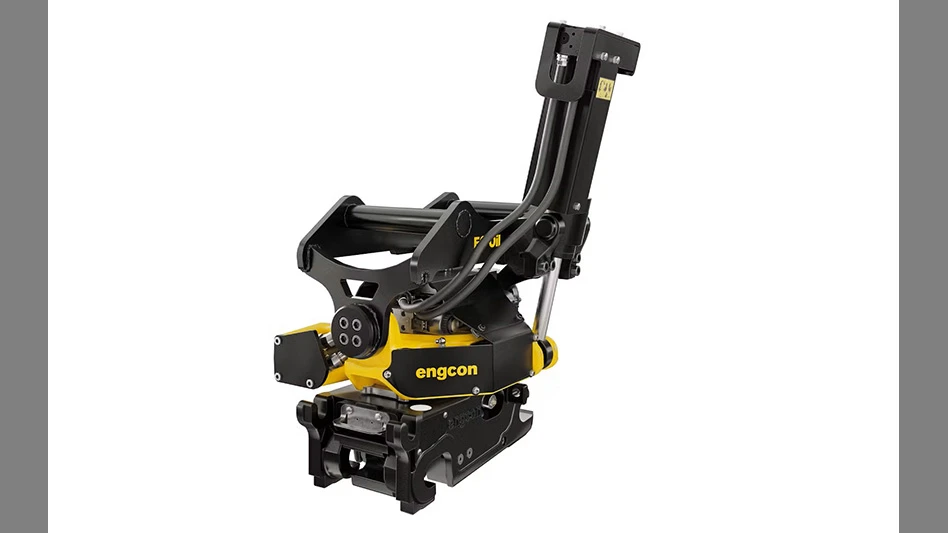The humble container. It’s often an overlooked aspect of municipal and industrial recycling programs, but undeniably an essential element in the recovery of post-consumer and post-industrial material.
Some municipalities and scrap recycling firms are selecting larger containers to facilitate collection and transportation of recyclable material.
While some cities are making the move to a cart-based system, most municipalities still rely on bins and containers for their recycling programs.
SIZING IT UP.
On the municipal recycling side, there has been something of a trend toward bigger containers over the years, says John Frederick, executive director of the Professional Recyclers of Pennsylvania (PROP), Bellwood, Pa.However, Frederick says municipalities using bins will often offer additional units for free, making more bins, not necessarily bigger ones, the means by which to collect a greater volume or a wider variety of recyclables.
That’s the trend at work in Dubuque, Iowa, says Paul Schultz, the city’s solid waste supervisor. "We’re tending not to go larger, but simply supplying more bins of the standard 18-to 20-gallon size," he says.
With so many programs expanding, many municipalities are also considering the benefits and costs of matching bins and containers with automated collection systems.
Denver, for instance, is making the transition to automated collection with carts, says Charlotte Pitt of Denver Recycles. The city has already begun introducing the carts and has plans to complete the transition for the whole city by the end of 2006, she says.
A chief reason behind looking to automated collection—and containers to match—is expanding the program without straining the staff, according to Pitt. "For Denver, we felt automating collection was the only reasonable way we could expand our list of acceptable recyclable items," she says.
HOLDING UP. Considering their environment, municipal recycling bins can have a surprisingly long lifespan, though they are lost to the occasional run in with a truck or to misappropriation.
Because some bins go missing or suffer damage, municipalities must be sure to stock a supply of spare bins to replace ones that end up out of service.
Programs also need spares on hand to accommodate new residents and other additions to the collection program.
Pitt says there’s no "magic number" of spare bins that should be on hand. "So many factors play into this."
Frederick cites the age of the bins, their type, community demographics and the program’s level of education and outreach as factors that affect container inventory figures. After weighing the factors, he recommends inventorying between 2 percent and 4 percent of the number of bins in service.
Containers are not only used to collect recyclables from residences, they are also employed at industrial sites to recover material for recycling.
WIDENING THE RANGE? The container that a scrap recycler drops off to a customer accomplishes a multitude of things, from being the receptacle for scrap metal to being an advertising and promotional vehicle for the recycler.
Recognizing the importance of a positive, professional image, many scrap recyclers make sure that the containers they deploy to customers include their companies’ names and logos and that they are aesthetically attractive. This means routinely inspecting and occasionally painting containers.
While containers are not as complex or expensive as much of the equipment a scrap yard owns, they have been climbing in price because of higher steel prices. Randy Katz with City Scrap of Akron, Ohio, says that some 70-yard boxes can run as much as $15,000.
A company may own more than 100 containers in various sizes, tying up significant capital.
Several scrap recyclers say that while they offer a wide range of containers to their customers, to accomodate customers outside of their local regional areas, the trend is toward larger containers .
Don Zulanch, with Cohen Brothers, Middletown, Ohio, says that interest in larger containers increases with the distance to a customer.
The key to using smaller containers, says Scott Uhrig with All Recycling, Englewood, Colo., is to work closely with customers to ensure proper service.
Uhrig says more of his company’s customers are seeking multiple containers of different sizes to accomodate the many materials they are recycling.
KEEPING UP APPEARANCES. Because the containers are often subjected to heavy day-to-day wear and tear from repeated loading and unloading, scrap companies say it is extremely important to keep the containers in good shape. Uhrig says that All Recycling’s sales people routinely check on the containers when visiting customers.
Zulanch agrees. "The container life span is getting shorter all the time. We have to do preventive maintenance on the [units] to make them leak proof, and they have to look decent."
In addition to standard maintenance, the escallation in scrap pricing is prompting the addition of lids and locks to containers, reducing theft.
Containers can act as a key bridge between scrap dealers and their generating customers. By responding to their customers’ changing needs, scrap dealers are able to strengthen their business relationships.
The authors are assistant editor and Internet/senior editor of Recycling Today and can be reached at jgubeno@gie.net and dsandoval@gie.net.

Explore the December 2005 Issue
Check out more from this issue and find your next story to read.
Latest from Recycling Today
- Author predicts spike in silver’s value
- SWANA webinar focuses on Phoenix recycling collaboration
- Domestic aluminum demand up through Q3 2024
- IntelliShift honored at IoT Breakthrough Awards
- Ace Green Recycling finalizes plans for battery recycling site in India
- Ambercycle, Benma partner to scale circular polyester
- NIST database aimed at increasing textile recycling
- ILA, USMX announce tentative agreement





